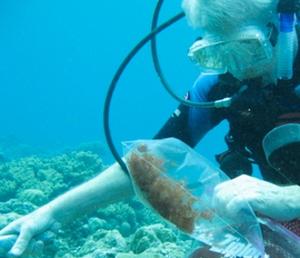Public healthSea floor organisms offer response to bioterrorism
Two companies, with $30 million funding from the U.S. Defense Threat Reduction Agency, will search for new antibiotics at the bottom of the ocean that could be used to fight bioterrorism; the companies expect to find treatments for the bubonic plague, Yersinia pestis, and other bacterial infections that could be utilized by terror groups for an attack on the United States

Hunting for antibiotics // Source: scientificamerican.com
The U.S. Defense Threat Reduction Agency recently signed a $29.5 million contract with San Diego-based Trius Therapeutics and the Scripps Institute of Oceanography to search for new antibiotics at the bottom of the ocean that could be used to fight bioterrorism.
Ted Purlain, citing a SignOnSanDiego.com report, writes that over the next four years, the two organizations expect to find treatments for the bubonic plague, Yersinia pestis, and other bacterial infections that could be utilized by terror groups for an attack on the United States. Researchers at the Scripps Institute for Oceanography have spent much of the last fifteen years scouring the seas for useful microorganisms and have built a library of more than 15,000 strains of bacteria, yeast and fungi that are kept on ice at their laboratories.
Trius will use its Focused Antisense Screening Technology to evaluate dozens of potential treatment candidates every week. The process will measure how effectively a molecule can act against specific proteins that are known to be critical in the functions of specific pathogens.
“We’re using the chemistry of nature and billions of years of evolution to create molecules and screen those molecules for activity,” Jeffrey Stein, chief executive of Trius, said.
The scientists hope to find bacteria that precisely target a pathogen’s means of attack. If they are too toxic, they can cause unwanted side effects.“It’s quite easy to find compounds that are generally toxic,” Stein told SignOnSanDiego.com. “The challenge is detecting which ones of those are inhibiting the cell because they are highly specific and potent.”
The military has recently increased its efforts to find new treatments for the effects of biological weapons as more infections have become drug resistant and the pipeline for new antibiotics has begun to dry up.
Currently, there are two compounds undergoing Phase II clinical trials that were found at the bottom of the ocean floor.
